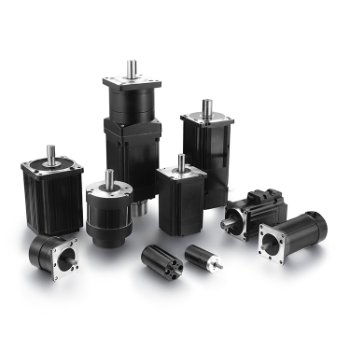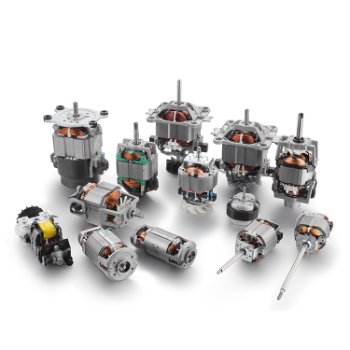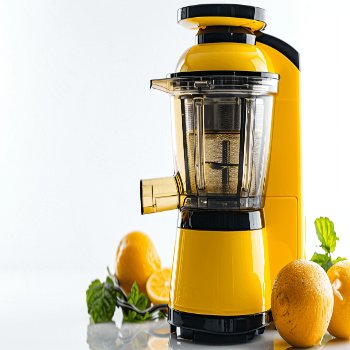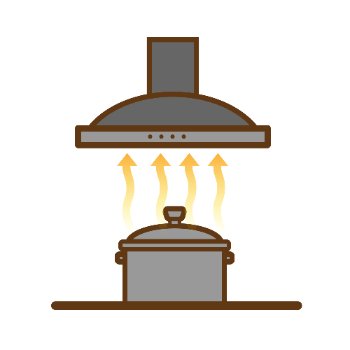If a noisy and energy-hungry motor is mistakenly selected in a household device, it will first affect the comfort, experience and quality of life of the home. Secondly, it will significantly increase the cost of electricity bills, bringing additional financial burden. Therefore, it is imperative to switch to low-noise, energy-efficient motors.
Low-noise, energy-efficient motors can significantly reduce household noise and energy costs on the one hand, while at the same time providing reliable performance, improving safety and extending service life.
Read this article in detail, you will understand the working principle of electric motors, their types, their use in home equipment, and the specific information of BGMotor's customized home equipment motor services. In addition, we will discuss whether to repair or replace the motor and how to extend its lifespan.
An electric motor is a device that converts electrical energy into mechanical energy. It operates on the principle of electromagnetism, where electric current flows through a coil, creating a magnetic field that spins a rotor. This mechanical movement powers various household appliances, from fans to vacuum cleaners, making our daily lives easier. Understanding electric motors is essential, as they play a crucial role in the functionality and efficiency of our home devices.

Electric motors can be broadly categorized into several types, with the most common being DC motors and AC motors.
--DC motors are powered by direct current and are known for their high efficiency and precise speed control. They are widely used in battery-operated devices like cordless drills and electric toothbrushes.
Brushed DC Motor: Uses mechanical brushes and commutators, commonly found in toys and small appliances.
Brushless DC Motor (BLDC Motor): It uses electronic commutation and has high efficiency, and is widely used in power tools, electric vehicles, etc.
--AC motors are powered by alternating current and are typically used in household appliances such as refrigerators, air conditioners, and washing machines. They come in various designs, including induction motors and synchronous motors.
Induction Motors: The most common AC motors, including single-phase and three-phase induction motors, are widely used in industrial and household appliances.
Synchronous Motor: The rotational speed is synchronized with the grid frequency, which is suitable for applications where precise speed control is required
Asynchronous Motor: The rotor has a different velocity from the magnetic field and is usually an induction motor.
Synchronous Motor: The rotor rotates synchronously with the magnetic field, making it suitable for high-precision applications.
Stepper Motor: Step-by-step rotation for applications that require precise positioning, such as printers and robots.
Servo Motor: With closed-loop control, it is suitable for applications that require high accuracy and high response speed.
There are many types of motors used in household equipment, and here are some common household devices and the types of motors they use:
Refrigerators: Compressor motors, usually AC motors, are used to compress and circulate the refrigerant.
Washing machine: Usually equipped with a DC motor or AC motor to drive the drum for washing and dewatering.
Vacuum cleaner: Uses a high-efficiency DC motor that provides powerful suction power and low noise.
Air conditioner: Equipped with multiple motors, including a compressor motor and a fan motor, usually an AC motor.
Microwave oven: Equipped with a small motor inside to turn the tray, usually an AC motor.
Kitchen appliances, such as blenders, juicers, etc., usually use high-efficiency DC motors or BLDC motors to provide precise speed control.
Fan: Uses an AC motor to provide ventilation and cooling.
Power tools: such as electric drills, chainsaws, etc., usually use DC motors to get higher speed and torque.
These motors play a key role in household equipment, improving the performance and convenience of the equipment. Choosing a high-efficiency, low-noise motor can improve the home environment and reduce energy consumption.
All of the above are real cases of BG, and you can check the specific information in the product application field.



When faced with a malfunctioning motor, you may wonder whether to repair it. Factors to consider include the motor's age, the cost of repairs, and the availability of replacement parts. If the motor is relatively new and the repair cost is low, fixing it might be a wise choice. However, for older motors with high repair costs, replacement may be more cost-effective in the long run. Analyzing these factors will help you make an informed decision.
BG Motor specializes in high-performance electric motors for household applications. Our motors are designed to meet the specific needs of various appliances, ensuring optimal performance and energy efficiency. We offer a range of motors, including DC motors, AC motors, and BLDC motors, all manufactured with precision to provide durability and reliability. Our commitment to quality ensures that our motors can withstand the demands of everyday use in your home.
BG Motor offers a wide range ofcustomized information services to meet the specific needs and requirements of our customers. Here's what we can offer:
We provide our customers with professional technical advice to help them select the most suitable motor type and specifications to ensure that the motor can meet the requirements of the specific application. Our team of engineers can provide customized solutions according to the characteristics of customers' equipment and usage scenarios.
According to the specific needs of customers, we can customize the specifications, dimensions and performance parameters of the motor. This includes:
Speed and torque: Adjust the speed and output torque of the motor according to the needs of the equipment.
Design: Provide options for different appearances and connection methods to suit the customer's equipment design.
Before mass production, we can provide samples for customers to test to ensure that the motor performance meets expectations. This process includes:
Functional test: Confirm the performance of the motor in practical applications.
Durability test: Evaluate the performance and reliability of the motor under long-term operation.
We provide customers with comprehensive after-sales service, including:
Technical support: provide technical guidance during installation and use.
Maintenance Recommendations: Provide recommendations for regular maintenance and upkeep according to the use of the motor.
We provide detailed product information, including technical specifications, user manuals, and installation guides, to help customers better understand and use our products.
We value customer feedback and understand the changes in customer needs through regular communication in order to continuously optimize our products and services.
How to extend the service life of motors in household equipment
Extending the service life of household motors involves regular maintenance and proper usage. Here are some tips to help you achieve this:
Routine Cleaning: Dust and debris can hinder performance. Regularly clean the exterior and interior components.
Proper Lubrication: Ensure that moving parts are well-lubricated to reduce friction and wear.
Temperature Control: Keep motors in a cool, dry environment to prevent overheating.
Avoid Overloading: Using motors within their specified limits prevents excessive wear.
By following these practices, you can prolong the life of your motors and maintain the efficiency of your household appliances.
In summary, understanding electric motors and their applications can enhance your home's functionality and efficiency. Explore the benefits of upgrading to energy-efficient models.
 BACK
BACK
Electric Motors: The Backbone of Modern Machinery Electric motors power our wor…
Since its establishment in 1994, Bogong has been deeply involved in the …
Precision and power are essential in modern machinery. High torque motors fulfil…
Torque in a motor refers to the rotational force generated to perform work. It’s…
Thanksgiving in the United States is a major holiday, celebrated on the fourth T…
Alternating current (AC) powers nearly every modern device. However, many people…